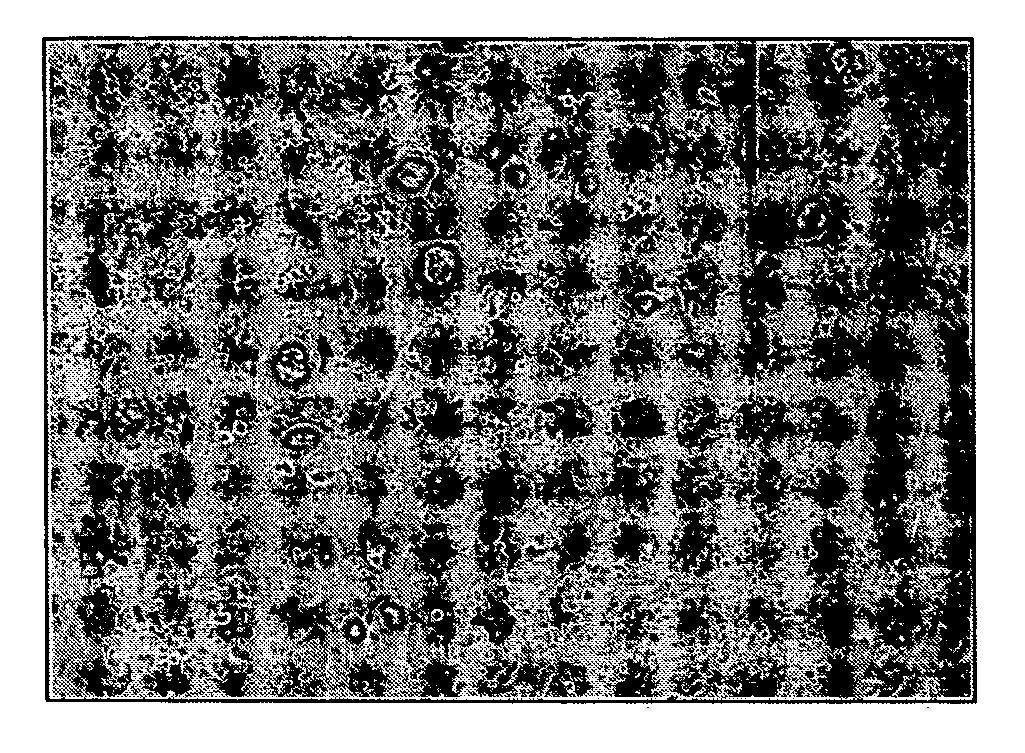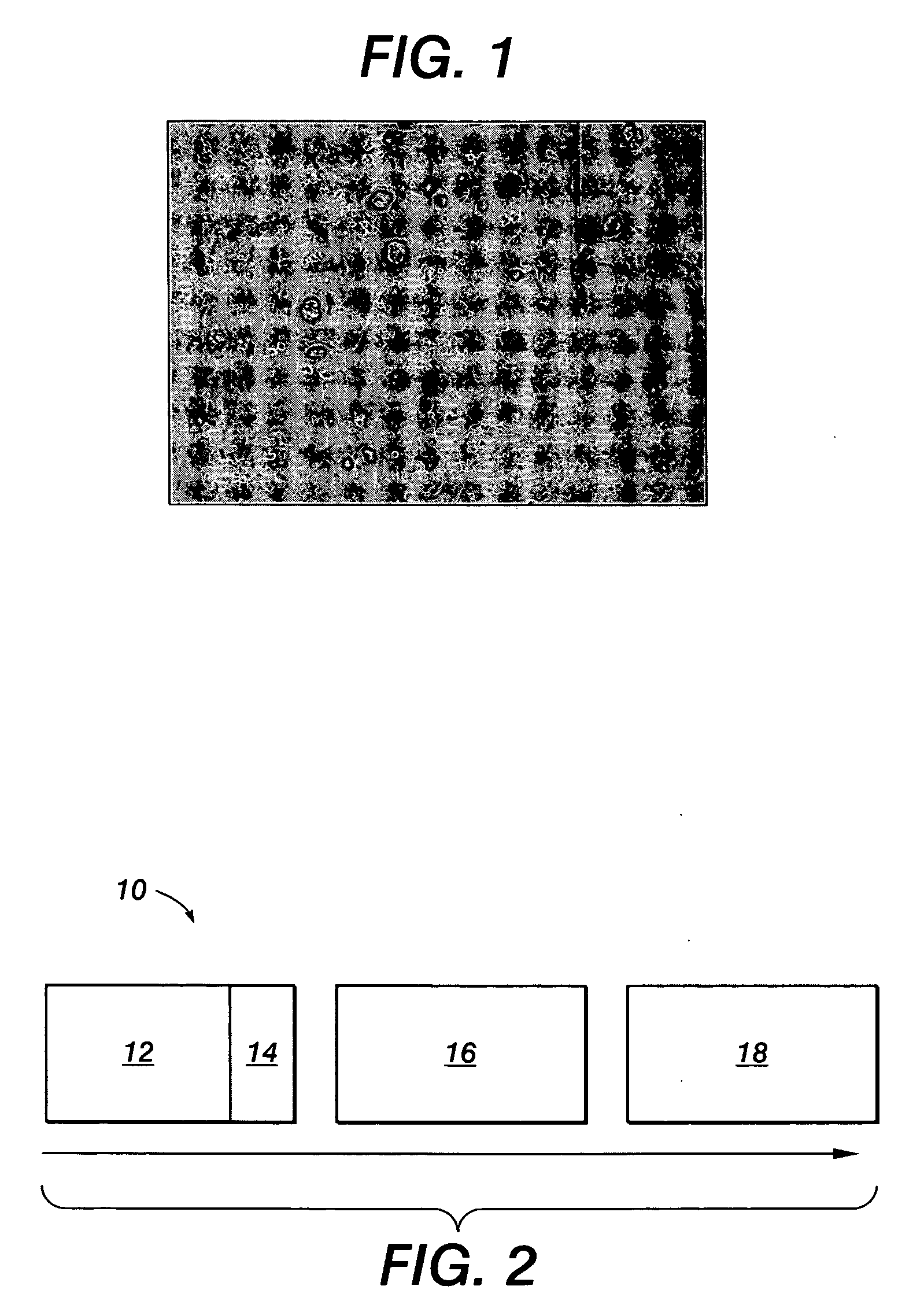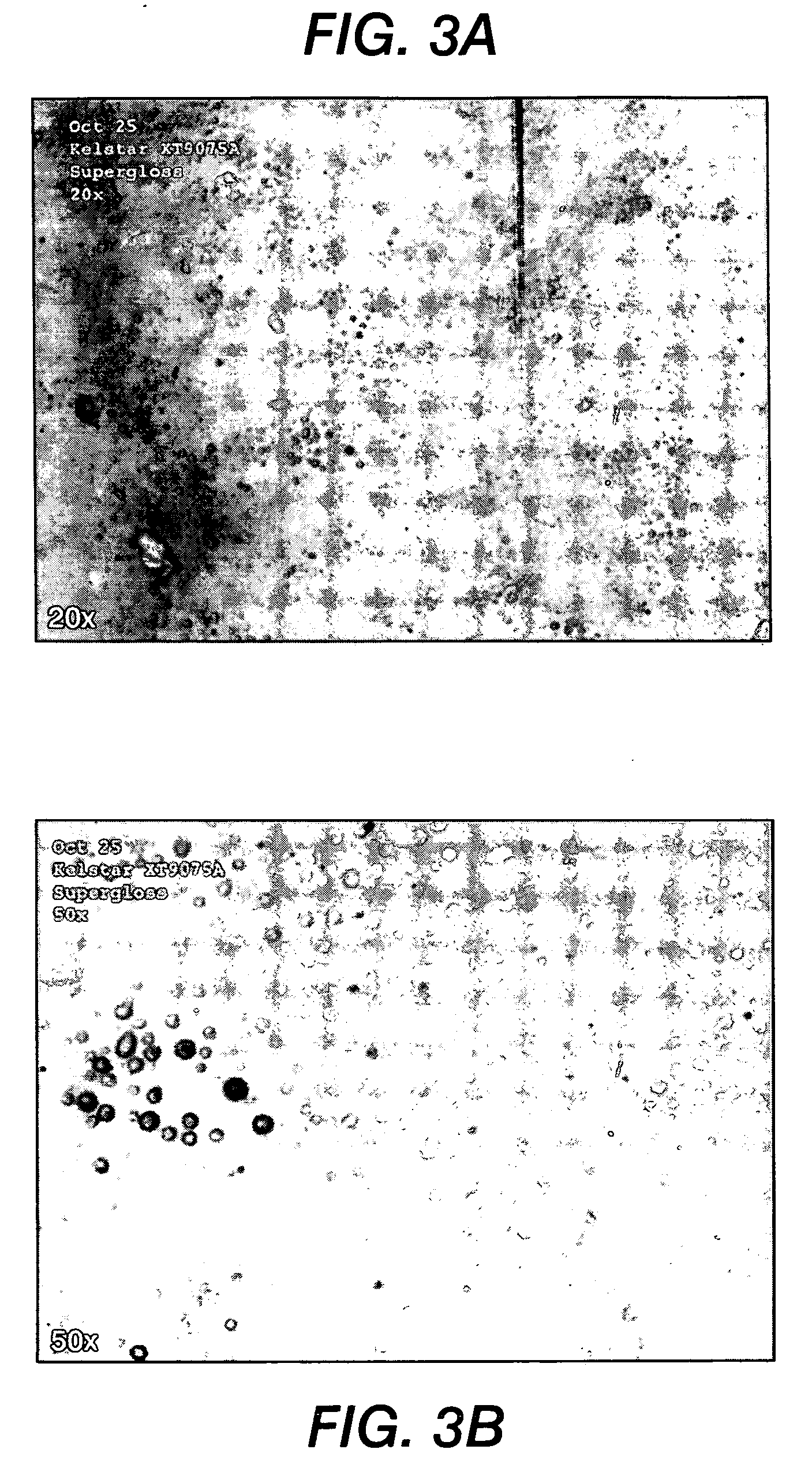Coated substrates and method of coating
a coating substrate and substrate technology, applied in electrographic processes, instruments, transportation and packaging, etc., can solve the problems of liquid film coatings that are not optically transparent, liquid film coatings that may not be consistent with quality standards, and liquid film coatings that experience a range of surface tension defects, etc., to achieve the effect of low surface tension, effective absence of haze, and surface tension of a portion
- Summary
- Abstract
- Description
- Claims
- Application Information
AI Technical Summary
Benefits of technology
Problems solved by technology
Method used
Image
Examples
example 1
[0077] An apparatus was assembled including a Euclid offset gravure lab coater positioned to receive coated or uncoated paper (type of media) sheets hand-fed from the exit of a Xerox iGen3 fuser nip operating at approximately 500 mm / s process speed. The iGen3 fuser was connected to a paper delivery unit for non-imaged 75 gsm 4200 paper. In a typical experimental run, 50 sheets of 4200 paper were run through the fuser to stabilize the fuser oil metering system and then an unfused image on a selected substrate was tipped through fusing the test image. Immediately upon exit from the fusing nip, the image sheet was picked up by hand, taped to a leader sheet and passed through the coating nip of the Euclid coater receiving an application of test coating. The sheet was then manually fed to a UV Fusion curing station for drying and / or curing of the applied coating. A critical parameter was that the time from fuser nip exit to application of coating did not exceed 3 seconds.
[0078] The Eucl...
example 2
[0083] The procedure of Example 1 was repeated with the exception that 0.5 parts by weight (based upon 100 parts of the composition of formulation 1) defoamer BYK 088 (BYK-Chemie) was added. The results were comparable to those of Example 1.
example 3
[0091] The procedure of Example 1 was repeated with the exception that the 220 lpi gravure roll was replaced by a 160 lpi gravure roll to take into account the non-active (water) component of the coating and the aqueous latex based system shown below as Formulation 2 was used. The applied coating was dried using radiant heat supplied by the FusionUV lamps. The dry coating film was approximately 2 microns thick.
[0092] Formulation 2
Wt %Wt %WetDryAcrylic emulsionRohm & Haas Rhoplex HA1264.829.2Acrylic emulsionRohm & Haas Rhoplex I-207421.96.6Viscosity modifierRohm & Haas Acrysol ASE-603.61(thickener)Amino alcoholDow AMP-953.43.4Viscosity modifierElementis Rheolate 450SurfactantAir Products Surfynol 5040.60.6Surfactant3M Novec FC44320.10.1
[0093] In this example total surfactant is 1.9% of dry polymer. This composition succeeded in both wetting the print without pinholes and remaining free of time dependent haze.
PUM
| Property | Measurement | Unit |
|---|---|---|
| Temperature | aaaaa | aaaaa |
| Time | aaaaa | aaaaa |
| Time | aaaaa | aaaaa |
Abstract
Description
Claims
Application Information
 Login to View More
Login to View More - R&D
- Intellectual Property
- Life Sciences
- Materials
- Tech Scout
- Unparalleled Data Quality
- Higher Quality Content
- 60% Fewer Hallucinations
Browse by: Latest US Patents, China's latest patents, Technical Efficacy Thesaurus, Application Domain, Technology Topic, Popular Technical Reports.
© 2025 PatSnap. All rights reserved.Legal|Privacy policy|Modern Slavery Act Transparency Statement|Sitemap|About US| Contact US: help@patsnap.com



